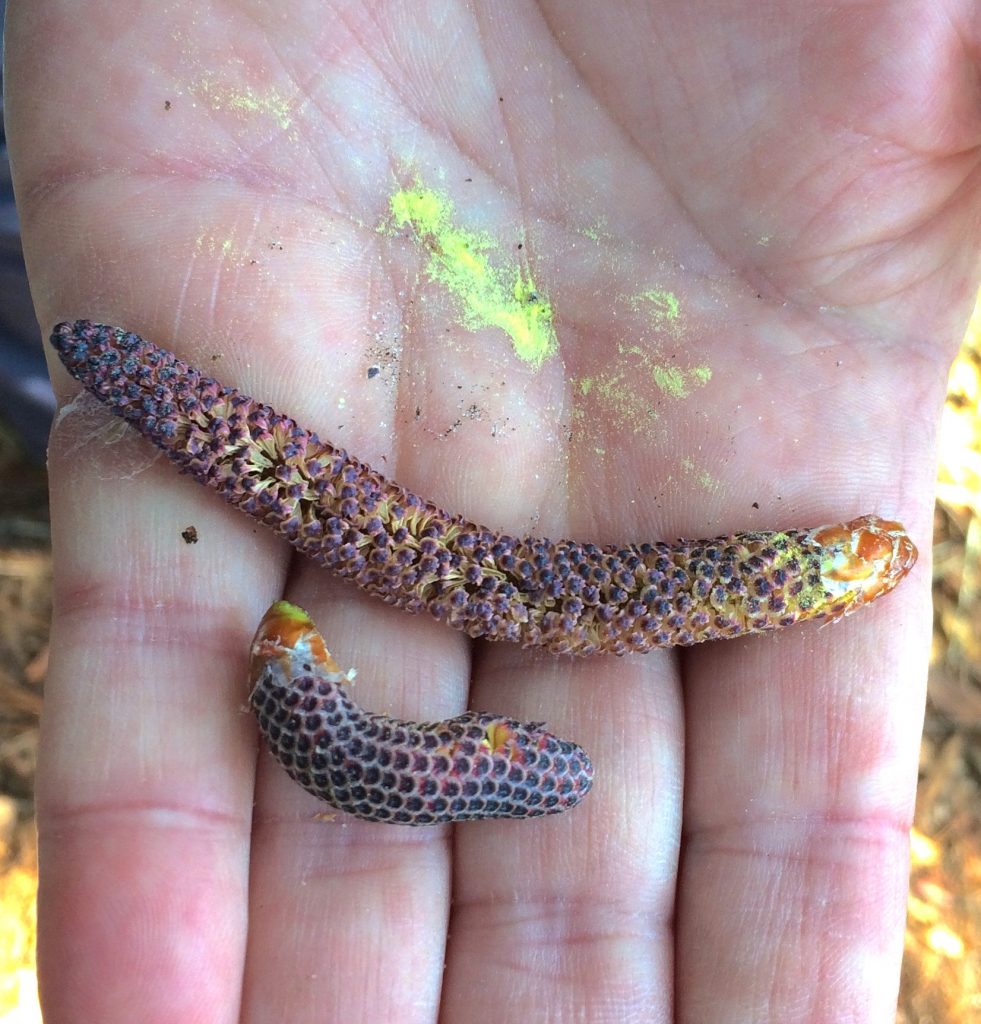
Article and photographs by Green Deane
Microsporangiate strobili… yeah, that’s a mouthful: Micro-spor-RAN-gee-ate stro-BEE-lee. It’s the Dead Latin way to say male pine cones. (English is always shorter and punchier than Latin. Extinguish the conflagration vs. Put Out The Fire.)
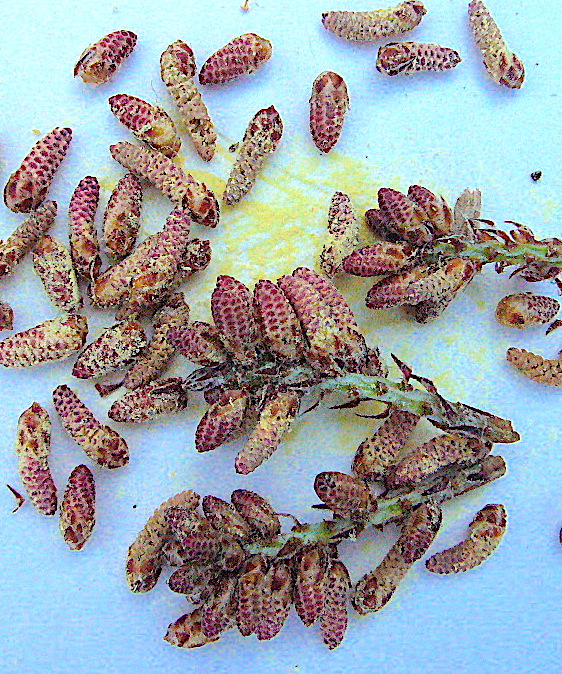
Male Pine Cones are growing, pollenating and dropping off trees now. They are edible but… when young said cones are tender, not a bad texture and piney in flavor. Palatable, a trailside nibble. Then they produce spores. The pollen is an analog molecule for testosterone and can give a boost to the system if consumed intentionally for that purpose. What does that mean? If you eat pine pollen the stomach acid eliminates the testosterone-like effects. You must put the pollen under your tongue and have it absorbed sublingually for it to have an effect (which reportedly lasts a few days.) Usually we just collect it and add it to flour for its protein content. You can eat the older, dry male pine cones but they tend to be flavorless and have a dry texture. Young female cones are also edible usually best if steamed. I have a video on pines here and an article here.
Poor Man’s Peppergrass is in it’s seasonal glory. The challenge to identifying it is the species can have a wide variety of looks depending on the growth stage. While Poor Man’s Peppergrass (PMPG) is in the mustard family, and has a wasabi-like flavor, there is more to the story, possibly. As the male pine cone story above starts with testosterone this one begins with estrogen … and Saturday morning coffee. Let’s build the story:
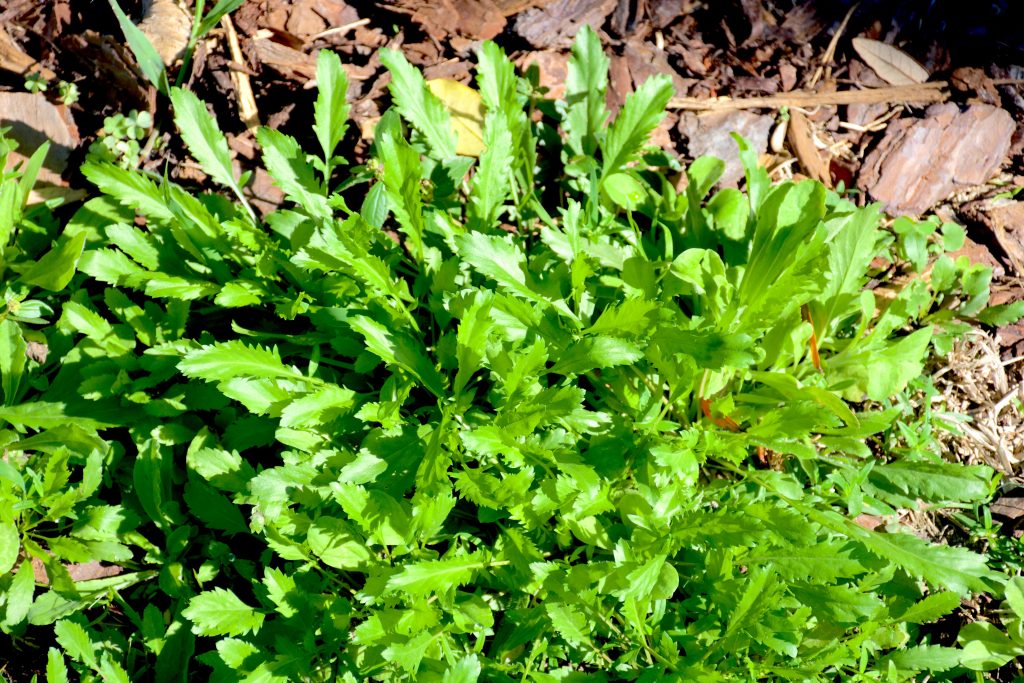
First, some plants you eat can increase estrogen in your body, some can lower it, whether you’re female or male. The Cruciferae Clan contains many common vegetables which through various ways reduce estrogens or their subsequent metabolites. Those plants include Cabbage, Broccoli, Kale, Brussel Sprouts, Turnips, Radishes, Mustards et cetera. Next we add a little coffee shop on wheels at the Winter Park Farmers’ Market on Saturday mornings. I visit now and then and get a cup of decaffeinated coffee. There’s been a sign on the wagon for a long time offering to make me a cup of Maca. In the dim reaches of my memory I recalled it was a South American plant used for food and beverage. Among Maca’s claims is to help intimate relationships. It might do this by lowering his level of a particular form of estrogen, estradiol, while also raising testosterone, a win-win within reason.
The third step is realizing that Maca is a Lepidium, a close relative to PMPG. Which species Maca is, in the genus, is a bit fuzzy. The original was called L. meyenii but it has been controversially dubbed L. peruviana. All that information lay dormant in my memory until I actually looked at some Maca for sale in a health food store. The label said Lepidium ssp. which means several species, not just one. That’s when I made the belated leap and wondered if the PMPG has Maca-like qualities. Unfortunately I don’t have an answer yet but it’s a reasonable question.
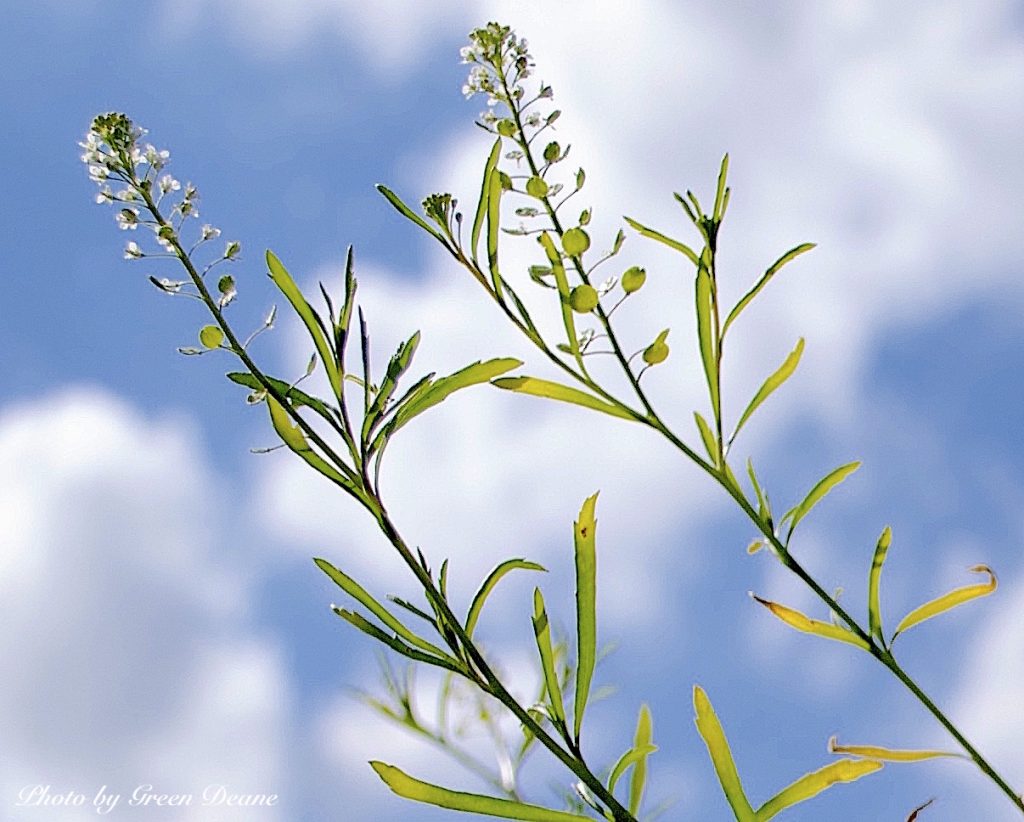
The entire plant of “Poor Man’s Pepper Grass” is edible, including the root. And while it is peppery it’s not always peppery. When the plant dries and turns brown the wasabi-like sting goes away. What I wonder is if it is dried, and or dried and roasted, will Poor Man’s Pepper Grass — particularly the root — make a Maca-like beverage with or without hormonal effects? Hmmmmm… The plant does not put on a big root and grinding it could be a bit of a chore, but, it might be “free” Maca and have an upside. It would certainly cost less than commercial Maca. I have an article on PMPG here and a video here.
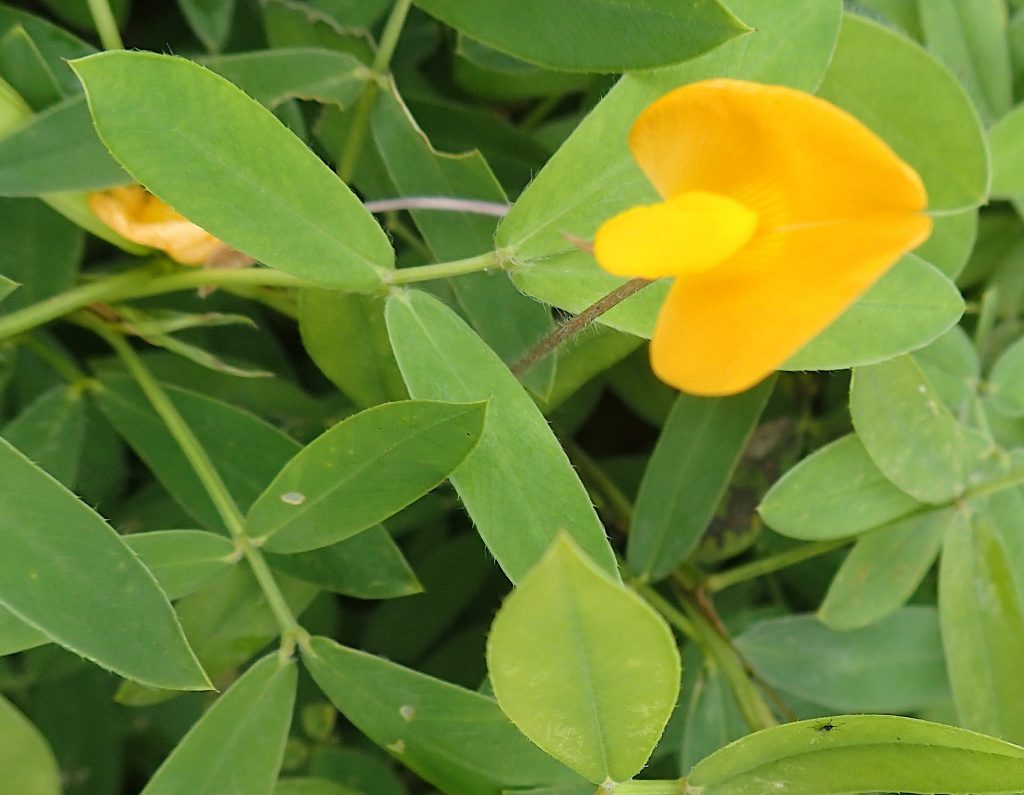
An often overlooked and edible ground cover that is blossoming in warmer areas of the state is Perennial Peanut, Arachis glabrata. In fact it can replace lawns completely, requires little care, and has an edible blossom. That’s a triple win. The little plant is long-lived, tough to kill and tenacious once established. It’s often used in parks for lawn replacement in spots that are difficult to mow such as around a rock layout, rough banks, easements, around trees or even strips in a dirt driveway. An added benefit is that in full sun it grows thick enough to discourage grass and other weeds. One commercial variety is called Ecoturf. There is also UF Peace, UF Tito and Florigraze. Perennial Peanut can be used as livestock feed as a foragable legume and nitrogen fixer producing three to six tons per acre. We eat the yellow blossoms raw which have a pea to bean-like flavor. You can read about it here.
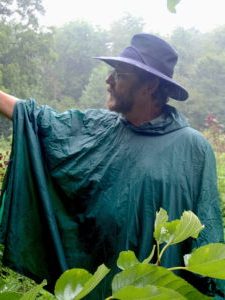
T’was a tad chilly and wet during Sunday’s class in Port Charlotte but we made it through and found dozens of edible species including the Sea Lettuce below. This weekend it should warm some. We’ll be in Gainesville Saturday and Orlando Sunday. Also note Sunday February 10th there will be a full-length class in downtown Winter Park, an opportunity to find edibles in a small-town environment.
Saturday, February 2nd, Boulware Springs Park, 3420 SE 15th St., Gainesville, FL 32641. Meet at the picnic tables next to the pump house. 9 a.m. to noon.
Sunday, February 3rd, Blanchard Park, 10501 Jay Blanchard Trail, Orlando, FL 32817. 9 a.m. to noon. Meet near the tennis court near the YMCA building.
Saturday, February 9th, Red Bug Slough Preserve, 5200 Beneva Road, Sarasota, FL, 34233. 9 a.m. to noon.
Sunday, February 10th, 329 N. Park Avenue, Winter Park. 9 a.m. to noon. Parking is free in the parking garage behind Panera’s.
To learn more about the classes go here.
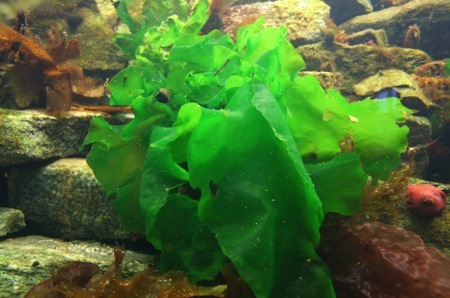
It’s a question I am asked often: Is seaweed edible? The answer is a qualified yes. Nearly all seaweed, or as some like to call them, sea vegetables, are edible. The problem is they are not all palatable, or tasty. There is one species in cold northern waters, Desmarestia ligulata, that has hydrochloric acid in it. That makes itself known quickly. But the same seaweed has been used as a source of acid for making pickles, diluted I am sure. In the Caribbean there is a blue-green algae, Cyanobacteria, that has been linked to ciguareara poisoning (sig-wa-TEAR-rah) and why we don’t eat Barracuda longer than your forearm. There might be some toxic red seaweed in the Southseas as well. The number of toxic seaweed, however, are few. There shouldn’t be any locally.
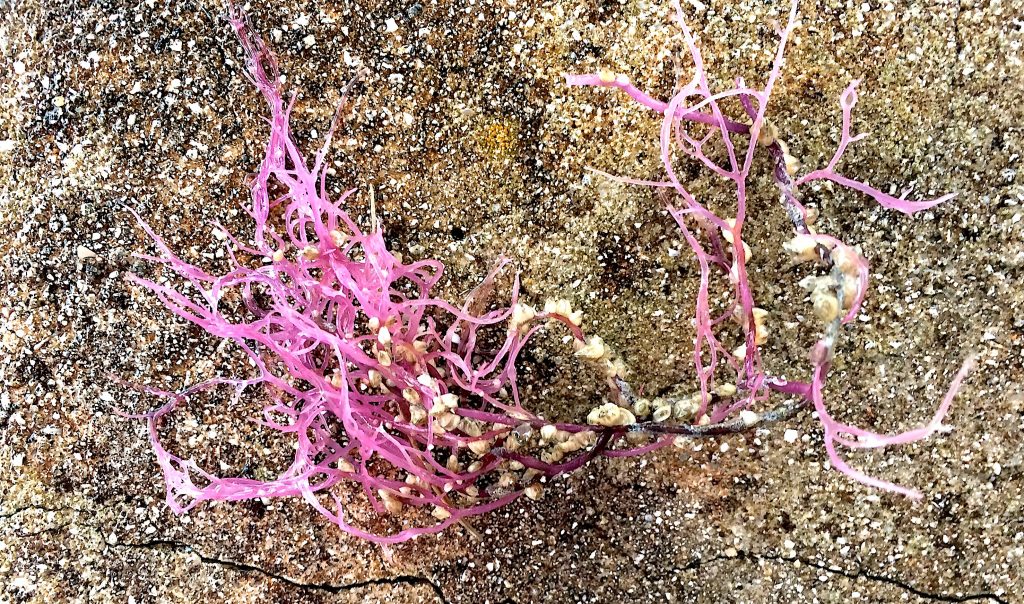
As for palatability that is a different issue. I have written about five seaweeds on the parent website. I was also musing recently how widespread a genus of seaweed can be. In Japan a particular seaweed, Porphyra yezoensis, is called Nori and is quite popular. The Scottish call it Laver (Porphyra umbilicalis.) Scotland and Japan are a long ways apart, no matter how you travel, yet they share a seaweed genus. For me seaweed is always a taste test. If I like it, it goes home with me, if not, no though you do have to take the water source into consideration.* Also know you can have free-floating seaweed, anchored seaweed, and some species that do both. The point is know the difference so you take home fresh seaweed. This past Sunday in Port Charlotte we saw some nice Sea Lettuce, upper left, one of the few really palatable ones. The pink one — above right — I am still trying to identify. (* When I lived in Japan in the 70’s an annual event to demonstrate how polluted Tokyo Bay was they would take water straight from the bay and develop photographic film with it. )
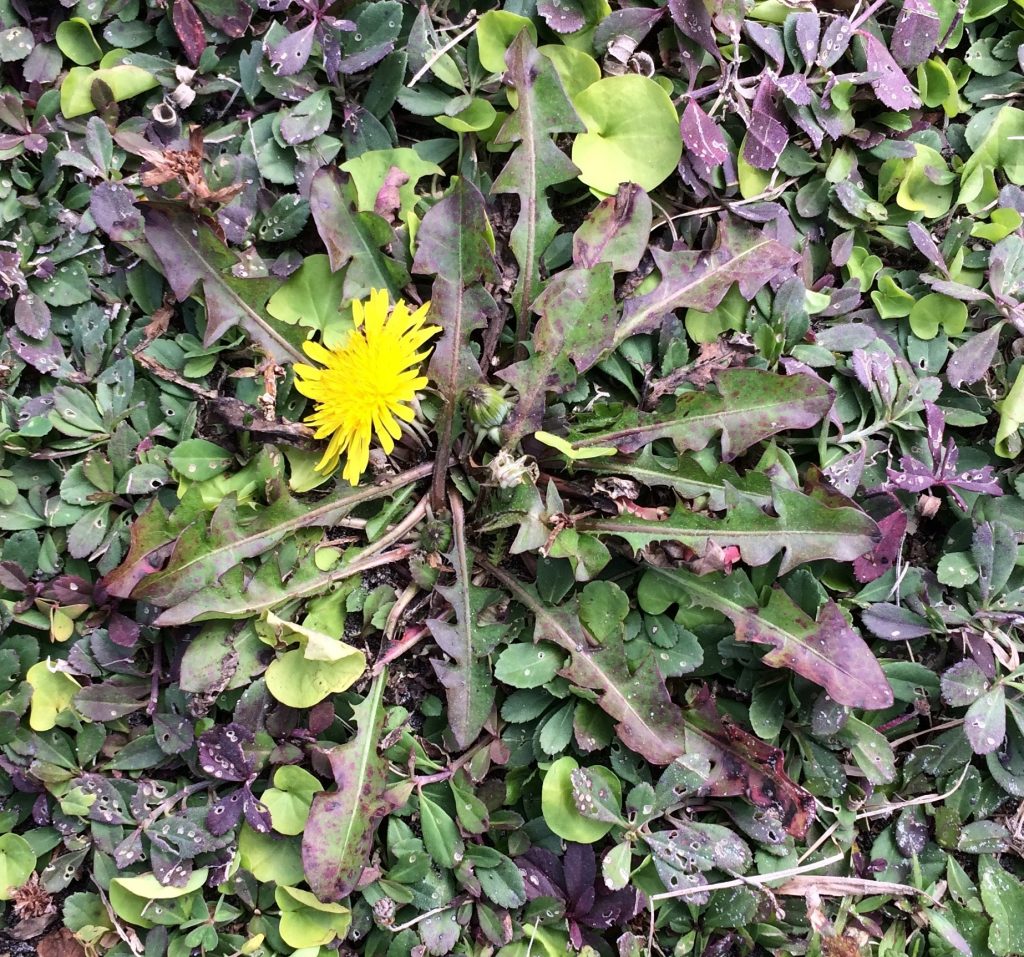
This newsletter follows in-season species so you can have an idea of what to look for when and where. We’ve mentioned Dandelions several times. Not to sound repetitious but Dandelions do not like Florida, too hot and too alkaline. But, they are out this time of year. Look for them in lawns around oaks or pines. Don’t forget that you can also find them downhill from those trees as well because the acid the trees create is carried downhill with rain or irrigation. The Dandelion above left left was among many seen this past weekend in Cassadaga. It is typical for a Dandelion in Florida; small, reddish, not too healthy looking. They are not the great big beautiful flower found up north. I have a video here and an article here.
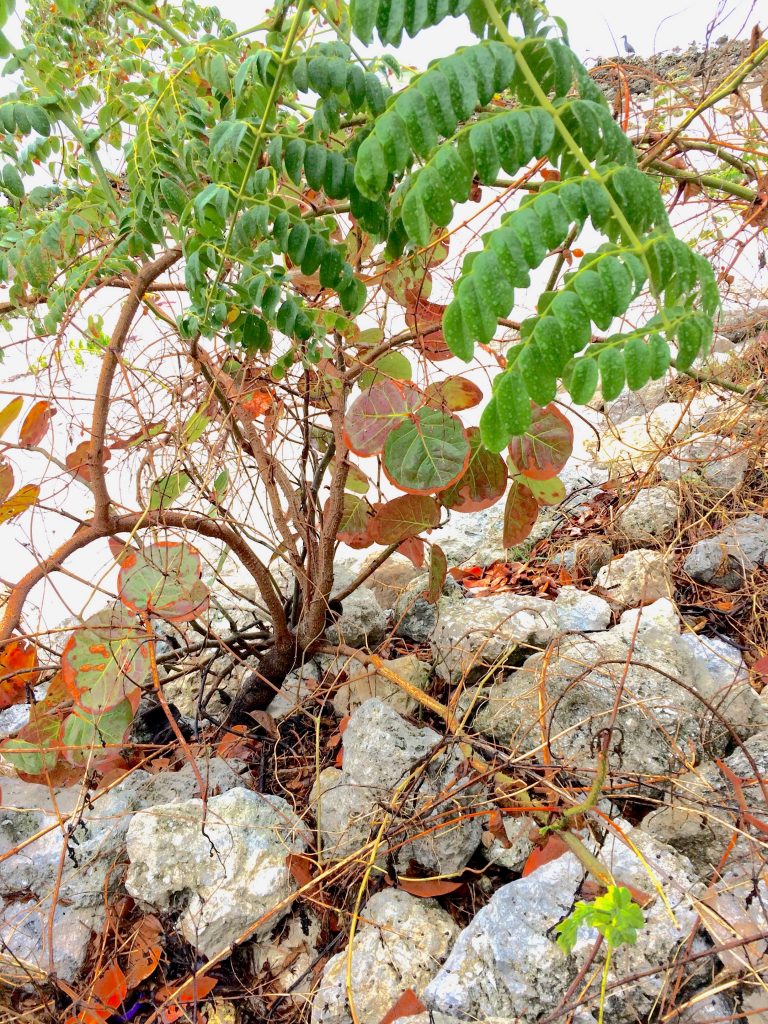
The Gray Nicker Bean is not edible. We have five species locally, all rare but one, the Gray Nicker Bean. It’s been used as a quinine substitute and has other medicinal applications. One of the almost interesting aspects of this Nicker Bean is that it’s called a “climbing shrub.” To most eyes it looks like a vine as the Smilax is a vine… except the Smilax is also called a “climbing shrub.” A shrub, unlike a tree, has several small trunks instead of one larger one (also often called a bole.) Shrubs also tend to be smaller than trees. Thus from one root you get several small trunks and a short woody plant. And as the Nicker Bean and Smilax wend their way up through the overgrowth they are climbing shrubs. In Port Charlotte this past Sunday wave action had removed most of the plants obscuring the base of this Nicker Bean except a Sea Grape. One can see the bottom for a change. Also called Nickernut it is botanically Caesalpinia bonduc and is the major food source for the larvae of Cyclargus thomasi bethunebakeri, which is the very rare Miami Blue Butterfly. The other Nickerbeans are C. crista, C. major, C. pauciflora, and C. pulcherrima, or Yellower Nicker, Hawaii Peals, Fewflowers Holdback, and Pride-of-Barbados. The Nicker Bean was featured in one of my newsletter in 2012:
“It was a road tour weekend with a Saturday class in Port Charlotte and West Palm Beach on Sunday. Round trip it was a total of 533 miles for the weekend on the big red motorcycle. I always enjoy these two locations because they have species not found even 200 miles to the north.
In Port Charlotte we saw a gray Nickerbean, Caesalpinia bonduc. It’s included among the “sea beans” that float north on ocean currents from Central and South America. However, the gray Nickerbean — aka Nickernut — is actually a Florida native. I have not found any reference to this legume being edible however the seeds have been used medicinally for many applications. As the plant was used extensively to combat malaria, it’s also been called the “quinine of the poor.” The non-edible seeds float and stay viable for at least 30 years. They have been found as far away as Scotland where they are called Molucca Beans. Oddly the Scots call all sea beans that come ashore arna Moire, or in Gaelic, Mary’s Kidney. One relative of the Nickerbean is edible. That is the C. pulcherrima, whose young seeds are eaten fresh or cooked. The flowers of that species are also edible after cooking. The stamens of C. gilliesii flowers are used to adulterate saffron. Interestingly the Nickerbean is related to the Bauhinias.”
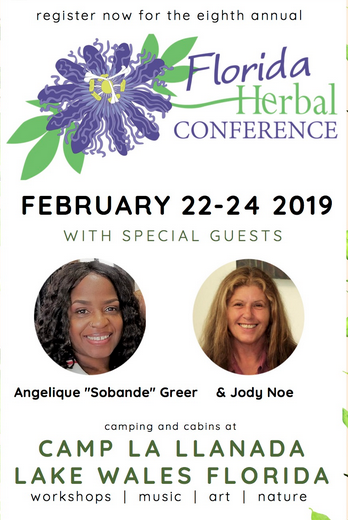
The Florida Herbal Conference is February 22-24. It’s their eighth annual event and for the eighth year I will be teaching there. You can learn quickly at conferences because you are getting a distillation of information from teachers with years of experience. Any questions can be answered quickly and to the point, no rummaging around to resolve an issue. You’re also with like-minded folks so there’s instant camaraderie. You are the majority. For more information go to: Florida Herbal Conference.

Donations to upgrade EatTheWeeds.com have gone well. Thank you to all who have contributed to either via the Go Fund Me link, the PayPal donation link or by writing to Green Deane POB 941793 Maitland FL, 32794. There are many needs left such as expanding the foraging teacher page and the page on monotypic edibles. Several functions were also lost when we transitioned to the new website. I’m still having a hard time finding articles I wrote! There’s always something and such things get more complex and expensive every year. Indeed, the average email cost to send each newsletter is $20.

Want to identify a plant? Looking for a foraging reference? Do you have a UFO, an Unidentified Flowering Object you want identified? On the Green Deane Forum we chat about foraging all year. And it’s not just about warm-weather plants or just North American flora. Many nations around the world share common weeds so there’s a lot to talk about. There’s also more than weeds. The reference section has information for foraging around the world. There are also articles on food preservation, and forgotten skills from making bows to fermenting food. One special section is “From the Frightening Mail Bag” where we learn from people who eat first then ask questions later. You can join the forum by clicking on “forum” in the menu.

Last week I did something I’ve wanted to do for several years. I recorded an opinion piece for National Public Radio Holland about a decade ago. We did it at the local PBS station in Orlando. The Dutch did a nice job with it adding music. I always thought it would make a nice video but it was audio. As I started making videos again and the technology has improved I put the audio to photos. It works well. You can listen/see it here. All my videos are available for free on You Tube. They do have ads on them so every time you watch a Green Deane video I get a quarter of one cent. Four views, one cent. Not exactly a large money-maker but it helps pays for this newsletter. If you want to see the videos without ads and some in slightly better quality you can order the DVD set. It is nine DVDs with 15 videos on each for a total of 135 videos. Many people want their own copy of the videos or they have a slow service and its easier to order then to watch them on-line. The DVDs make a good gift for that forager you know especially on long, cold winter months. Individual DVDs can also be ordered or you can pick and choose. You can order them by clicking on the button on the top right hand side of this page (if your window is open wide enough.) Or you can go here.
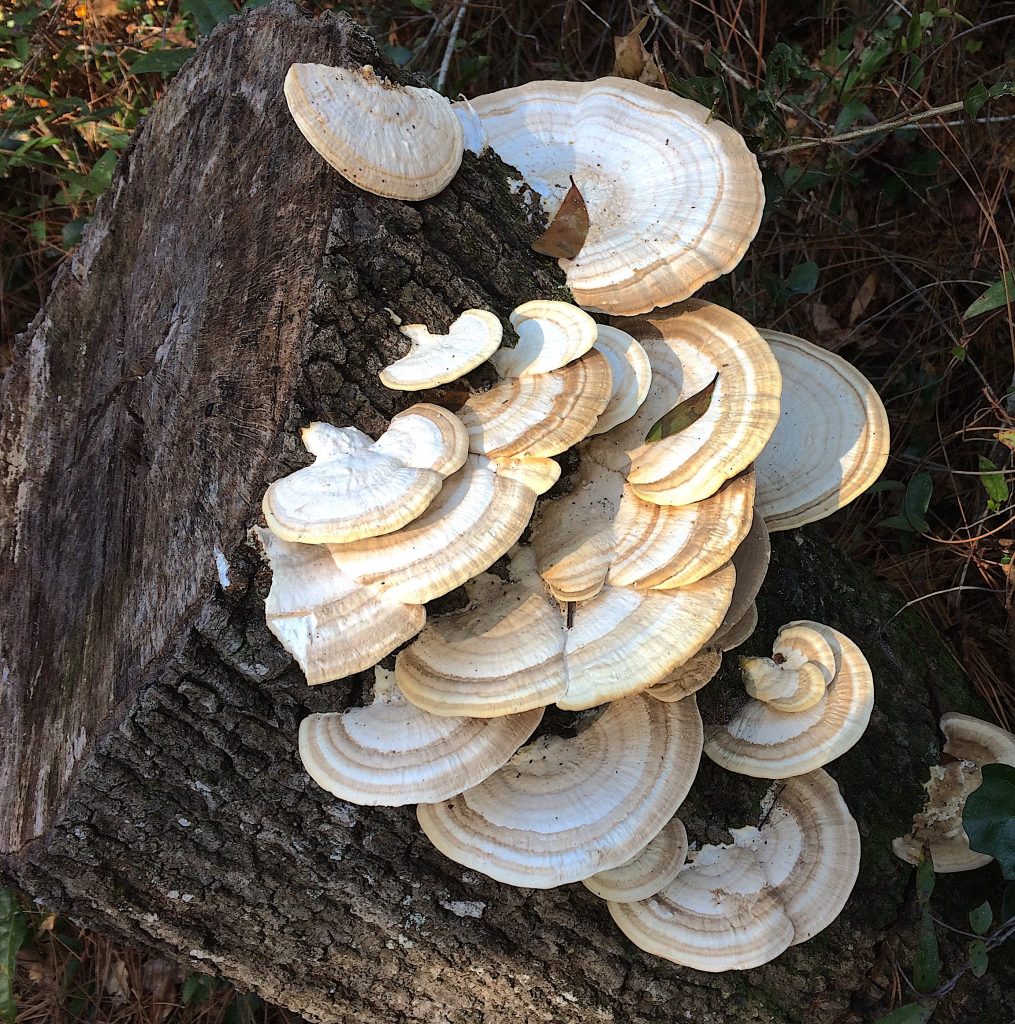
Are they edible? The general answer is no. Are they toxic? Again the general answer is no. They might be medicinal, however and the specie might be Trametes lactinea (try-ME-tees lak-tee-NAY-ah.) We saw them this weekend in Cassadaga. They are common this time of year growing on dead wood. There is only one toxic polypore in this area of the world — Hapalopilus nidulans — and that ain’t it. As for Trametes lactinea I quote the Research Journal of Phytochemistry, 2016, vol. 10, Issue 1, page ten:
“The total phenolic and flavonoid contents, as well as the in vitro radical scavenging potentials of extracts of Trametes lactinea collected from forest near the Teaching and Research farm of the Federal University of Technology, Akure were assessed. The acetone extract possessed higher total phenolic content (3.21 mg GAE g–1) whereas the methanol extract had higher total flavonoid content (1.46 mg RE g–1.) All the extracts were able to scavenge 1, 1-diphenyl-2-picrylhydrazyl (DPPH), nitric oxide (NO), hydrogen peroxide (H2O2) and hydroxyl (OH) radicals. At a concentration of 2 mg L–1the extracts produced activities greater than 50%. The observed result indicates that this wild macrofungus, Trametes lactinea could be a valuable source of natural antioxidants that can protect against free radicals mediated damages.”
If you would like to donate to Eat The Weeds please click here. Or you can use my Go Fund Me link, or by writing to Green Deane POB 941793 Maitland FL, 32794
This is weekly issue 340.

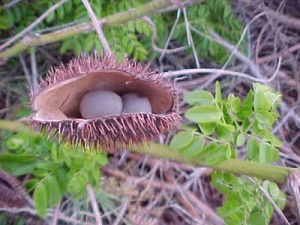

Lepidium latifolium, pepperweed or dittander, root smells just like maca with a bit of horseradish added. It’s considered to be an invasive weed in California, wonder if it has similar benefits as maca.